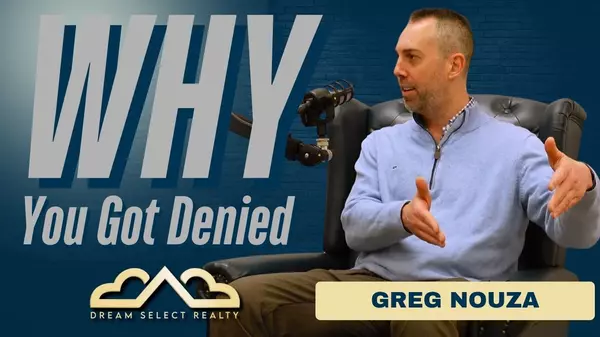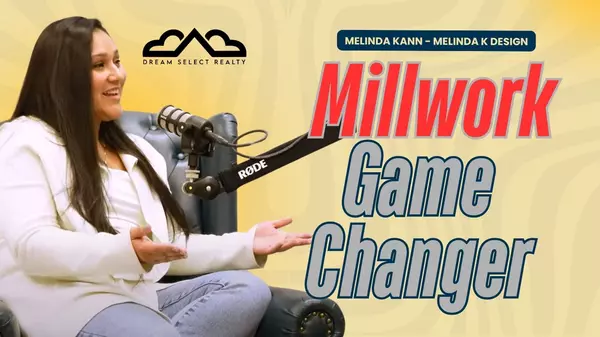Overlooked Down Payment Programs Every New York Buyer Should Know About

Inside the Mortgage Maze: Kevin Dougherty’s Essential Tips for First-Time Homebuyers in 2024
Buying a home is one of the most significant milestones in life, but navigating the mortgage process can feel like learning a foreign language. Terms like "pre-approval," "interest rates," and "debt-to-income ratios" can overwhelm even the savviest buyers. Fortunately, Kevin Dougherty, a seasoned loan consultant with Loan Depot, joined The Dream Select Realty Podcast to demystify the home financing process. Whether you're a first-time homebuyer or planning to refinance, Kevin’s expert insights provide the clarity you need to achieve your homeownership dreams.
In this comprehensive guide, we’ll explore Kevin’s advice, touching on budgeting, pre-approvals, credit score management, and how to leverage mortgage programs to secure the best deal. By the end, you’ll be equipped with actionable strategies to navigate the mortgage maze confidently.
Meet Kevin Doherty: The Loan Doctor
With over 20 years of experience in the mortgage industry, Kevin Dougherty is more than a loan consultant—he’s a trusted partner for homebuyers. Working at Loan Depot, the second-largest non-bank lender in the U.S., Kevin specializes in tailoring mortgage solutions to meet each client’s unique needs. From first-time buyers to seasoned investors, his hands-on approach ensures a smooth loan process.
Step 1: Know Your Numbers—Budgeting Like a Pro
Kevin’s first piece of advice? Get real about your finances. He suggests taking a deep dive into your monthly expenses before even thinking about buying a home.
How to Get Started:
-
Print Your Last Two Months of Bank Statements:
Highlight your expenses in different categories: essentials (rent, groceries, utilities), discretionary spending (eating out, shopping), and tap-and-go purchases (coffee runs, convenience store snacks).
-
Analyze Spending Habits:
Look for patterns. Are you spending hundreds on small purchases like daily Starbucks lattes? Kevin notes that these seemingly minor expenses can add up to thousands over a year.
-
Set a Housing Budget:
Decide on a monthly payment you’re comfortable with. Remember, owning a home comes with additional costs like property taxes, insurance, and maintenance.
Step 2: Pre-Approval vs. Pre-Qualification—What’s the Difference?
When you’re ready to shop for a home, the first step is getting pre-approved. Kevin explains that a pre-approval is much more robust than a pre-qualification.
- Pre-Qualification: A quick estimate of what you might afford based on unverified information.
- Pre-Approval: A comprehensive evaluation of your finances, including income verification, credit analysis, and a review of assets.
Why Pre-Approval Matters:
- Strengthens Your Offer: Sellers are more likely to accept offers from pre-approved buyers, knowing they’re financially qualified.
- Avoids Surprises: A pre-approval gives you a clear picture of what you can afford, reducing the risk of falling in love with a home outside your budget.
Step 3: Mastering Your Credit Score
Your credit score is a major factor in determining your mortgage interest rate. Kevin emphasizes the importance of understanding how credit scores work and shares practical tips for improvement.
Tips to Boost Your Credit Score:
- Reduce Credit Utilization: Aim to keep your credit card balances below 30% of their limits.
- Pay On Time: Late payments can significantly damage your score.
- Avoid New Debt: Don’t open new credit accounts or take on additional loans before applying for a mortgage.
- Monitor Your Score: Use tools like MyFICO.com for accurate mortgage-specific scores.
Step 4: Down Payment Assistance—Help Is Out There
Saving for a down payment can be a daunting task, especially in high-cost areas like Long Island and New York City. Kevin highlights several programs designed to help first-time buyers:
- SONYMA (State of New York Mortgage Agency): Offers grants and low-interest loans for eligible buyers.
- FHA Loans: Require as little as 3.5% down, making them a popular choice for first-time buyers.
- Local Grants: Many counties and cities offer programs to assist with down payments and closing costs.
Pro Tip: Eligibility for these programs often depends on your income, credit score, and the type of property you’re purchasing. Work with a loan consultant to explore your options.
Step 5: Fixed vs. Adjustable-Rate Mortgages—Which Is Right for You?
One of the most common questions buyers face is whether to choose a fixed or adjustable-rate mortgage (ARM). Kevin breaks down the pros and cons:
- Fixed-Rate Mortgages: Offer stable payments over the life of the loan, making them ideal for buyers planning to stay in their homes long-term.
- Adjustable-Rate Mortgages (ARMs): Start with lower initial rates but can adjust after a set period, making them suitable for buyers who plan to sell or refinance within a few years.
Kevin’s Take: “The right choice depends on your financial goals and how long you plan to stay in the home. Always do the math to determine which option saves you the most over time.”
Step 6: Refinancing—Unlock Your Home’s Potential
For current homeowners, refinancing can be a powerful tool to reduce monthly payments, eliminate private mortgage insurance (PMI), or fund home improvements.
When to Refinance:
- Lower Interest Rates: If rates have dropped significantly since you took out your loan.
- Debt Consolidation: Use home equity to pay off high-interest credit card debt.
- Major Renovations: Upgrade your kitchen or add an extra bathroom with a cash-out refinance.
Step 7: The Truth About Interest Rates
Interest rates are a hot topic, and misinformation abounds. Kevin explains that while rates have risen from historic lows during the pandemic, they’re still relatively affordable compared to the 30-year average of 7.7%.
Key Factors Affecting Rates:
- Your credit score
- Loan type (FHA, VA, conventional)
- Loan amount and down payment
Kevin’s advice? Focus on the total cost of the loan, not just the rate. “A slightly higher rate might come with fewer fees, saving you money in the long run.”
Step 8: Renovation Loans—Transforming Fixer-Uppers
In competitive markets, move-in-ready homes often come with hefty price tags. Kevin encourages buyers to consider homes that need a little TLC.
Benefits of Renovation Loans:
- Lower Purchase Price: Save money by buying a home in need of updates.
- Customizable Features: Design the space to your liking.
- 203(k) Loans: These FHA-backed loans now allow up to $75,000 for renovations, covering projects like kitchens and bathrooms.
Step 9: Why Loan Depot Stands Out
As the second-largest non-bank lender in the U.S., Loan Depot offers unmatched flexibility and support. Kevin emphasizes their extensive range of loan programs, from first-time homebuyer loans to tailored options for self-employed borrowers.
Why Choose Loan Depot:
- Over 1,300 loan programs
- Dedicated processors to streamline the loan process
- Hands-on consultants like Kevin who guide clients from start to finish
Conclusion: Start Your Journey Today
Buying a home may feel overwhelming, but with the right guidance, it can also be one of the most rewarding experiences of your life. By following Kevin Dougherty’s advice on budgeting, pre-approvals, credit scores, and mortgage programs, you’ll be well on your way to owning your dream home.
For more expert tips and the latest homes for sale on Long Island, visit www.dreamselectrealty.com.
Categories
Recent Posts










